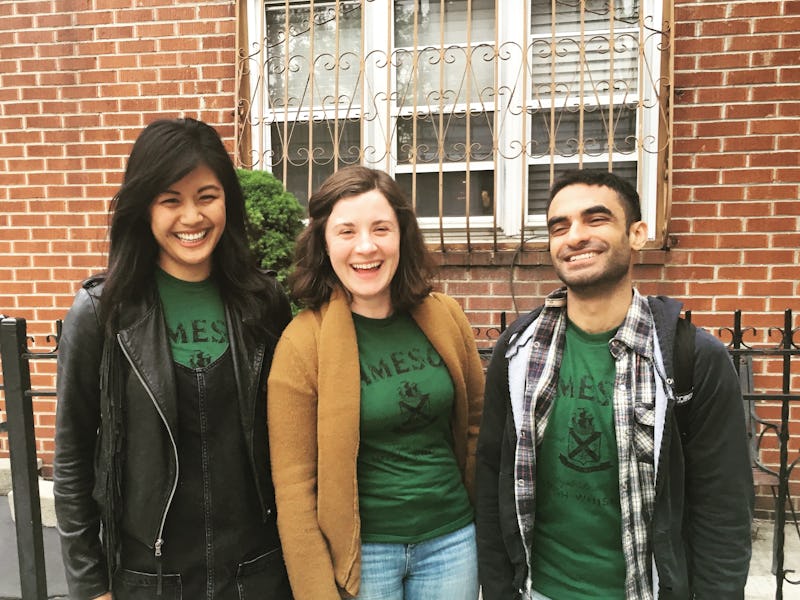The Definitive Guide to Making a Three-Parent Baby
A baby born to a heterosexual couple and a female donor are changing the landscape of traditional birth.

Five months ago, a healthy little boy was born, to the delight of his parents — and the entire scientific community. The infant was the first person in history to have been born to three parents — a mom, a dad, and a donor of replacement DNA.
Judging by the success of his experimental conception and birth, he probably won’t be the last. While the circumstances of his birth remain controversial, we’re blazing toward a future where tri-parent babies are a thing, and it’s best we try to understand what this remarkable and perhaps unsettling feat of science actually involves.
As New Scientist reports, A.H.’s parents — his full name has been withheld by the hospital involved with his birth — a couple from Jordan, sought out a specialist in the unprecedented technique because they had already lost two children and had had multiple miscarriages. A.H.’s mom was a carrier for Leigh’s syndrome, an illness that impairs the growth of the brain, muscles, and nervous system of developing infants. Leigh’s syndrome is carried and passed on through a part of the mother’s cells known as the mitochondria.
A.H.’s mom was therefore a perfect candidate for the unprecedented “mitochondrial replacement therapy” technique — that’s the scientific term for the three-parent baby method — which offered her the seemingly impossible opportunity to have a healthy child.
It’s important to note that the donor plays a hugely important role in donating her healthy mitochondria to the infertile parents’ cause. She must be female because mitochondria are only ever passed on through the mother — that is, through the egg involved in pregnancy. The thing about mitochondria is that they have their own DNA — 37 genes’ worth, to be exact — and so they can be manipulated separately from regular DNA in the nucleus, which contains the instruction manual for making a baby.
There were two different paths for A.H.’s mom. The first and most straightforward strategy goes like this: You fertilize both mom’s egg and the donor’s egg with dad’s sperm, creating two embryos; the nucleus from each egg is removed before it starts dividing, and then moms nucleus is injected into the donor’s now-empty egg. Mom’s nucleus-free egg, still containing all of its defective mitochondria, is thrown out. The donor egg, now home to the nucleus that contains the instructions to make a baby, still holds all of its original, healthy mitochondria. The egg divides, and if all goes well, it grows into a healthy little baby.
Simple, right? But A.H.’s Muslim parents were strictly opposed to killing any embryos, so the doctors they worked with — including three-parent pioneer Dr. John Zhang, from New York’s New Hope Fertility Center — had to come up with a way to sidestep the part where they had to destroy a fertilized egg. Good thing, then, that there’s an alternate strategy called “spindle nuclear transfer. Physicians using this method take the nucleus from one of the mother’s eggs and inject it into a donor egg that has also had its nucleus removed. Fertilization with dad’s sperm, in this case, comes after. Five embryos were produced using this technique, only one of which survived — a male, which, nine months later, was born as A.H.
The sheer amount of embryonic manipulation that goes into making a three-parent baby is enough to give anyone pause, and it’s understandable that the majority of the scientific community has hesitated to push forward with the technique. We don’t really know how to think about a child like A.H., ethically speaking: Does the mitochondrial donor equally qualify as a “parent,” even though her DNA only makes up a tiny fraction of A.H.’s? Even though the deliberate killing of embryos can be avoided using the spindle nuclear transfer technique, what are we to make of the four embryos that simply didn’t make it? Internationally, the United Kingdom is the only country that has approved the three-parent technique as a fertilization tool so far. The child’s family, however, ended up flying to Mexico for the procedure with Dr. Zhang, who admitted to New Scientist that in that country “there are no rules.”
All reports show that A.H. is healthy and disease-free, and genetic testing has shown that only 1 percent of his mitochondria contain the mutations his mom once carried — too small of a fraction to be considered risky, but worth monitoring (that the mutation was passed on to a small degree, despite replacing his mother’s DNA, suggests potential, as-yet-unexplained leaks in the system). The only way we can know for sure whether this is a completely safe technique is to monitor the health of more three-parent babies, which poses a bit of a conundrum. As we push the limits of biology to do what is, essentially, good, we’re going to require a lot of data, the gathering of which may seem too risky to be considered anything but bad.
But science, then and now, has never been about binary thinking; the birth of A.H., a living, breathing culmination of mom, dad, and donor, has made that much clear.